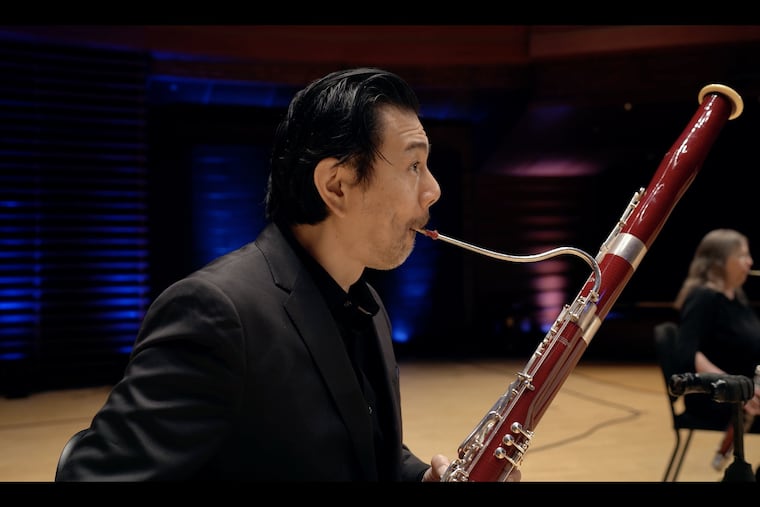At Philadelphia Orchestra, a joyous Coleman, sparkling Mozart, and not a string in sight
This week’s Digital Stage program is a two-piece set of non-orchestral repertoire, pairing Valerie Coleman’s “Red Clay & Mississippi Delta” and Mozart’s “Gran Partita.”

It seems way too obvious to have to state: You go to the orchestra to hear, well, an orchestra. And yet nothing is obvious during the pandemic, least of all programming puzzles.
The Philadelphia Orchestra assembles a lovely two-piece set of non-orchestral repertoire in its latest Digital Stage show, where Valerie Coleman’s Red Clay & Mississippi Delta and Mozart’s Serenade in B Flat Major, the “Gran Partita,” fit together nicely. And there’s not a string player in sight.
Coleman’s work, in fact, is so non-orchestral it’s for a mere five players — a woodwind quintet she wrote more than a decade ago as a member of Imani Winds.
For many years now, Imani has been hosted in Philadelphia by the Philadelphia Chamber Music Society, and here, played by members of the Philadelphia Orchestra in a concert available online Thursday through March 25, her virtuosic instrumental writing arrives in beautiful form.
The short piece is inspired by Coleman’s family, and an orchestra promotional blurb says that if you listen closely, you might be able to “hear the juke joints and casino boats that line the Mississippi River.”
If Red Clay & Mississippi Delta has that kind of specificity, there’s also a thrill to the work that is universal — a punch and a swagger that dovetails with the skills of the orchestra’s players. Oboist Philippe Tondre bends his tone with great finesse, and hornist Jennifer Montone exudes attitude. Flutist Patrick Williams, bassoonist Daniel Matsukawa, and clarinetist Ricardo Morales bubble along with the fluidity of running water, and it turns out that woodwind players have good snapping skills, too.
Coleman’s music has a special kind of joy. It’s not ecstatic, but, rather, carefree — the same sense of liberation and goodness that has been central to a certain American sound in classical music for decades.
Quintets require no conductor, but for Mozart’s “Gran Partita,” Yannick Nézet-Séguin comes to the podium. The piece is scored for just 13 instruments, and yet, with seven substantial movements, it presents as sprawling. It can sound like it, too. In this reading, the first couple of movements are a bit of a disappointment. Nézet-Séguin, who frequently likes faster tempos, doesn’t capture any of the train-racing elation the first movement can have. The second movement even feels sleepy.
But elsewhere, there is both sparkle and glow. The popular, dreamy “Adagio” is notable both for the individual melodic lines and the general luxuriousness of the ensemble — and, it must be said, for the sensitive attention to camera work. In the movement’s coda, we get a series of quick glimpses of players, a graceful pan across Matsukawa and his bassoon, and then the arms of the conductor falling into the silence of the movement’s end.
» READ MORE: Philadelphia Orchestra and Brian Sanders’ JUNK have teamed up again, for ‘Carmen’
From here forward, Nézet-Séguin and the players land on the perfect character for each movement: the bounce of the “Menuetto,” a “Romance” of simple pleasures and a touch of mischief, a “Finale” with military flare.
The penultimate movement, a theme and variation, is a world unto itself, presenting a theme of the most guileless nature. It’s a ruse, of course. Mozart tumbles into various emotional realms, from tragic to profound, pulling in vivid instrumental colors — the rumble of the contrabassoon, a sweet lullaby of oboe — along the way. All together, this particular mix of winds produces a timbre that still strikes the ear as unique. It may not be an orchestra, but it’s hard to imagine any other ensemble doing the trick.
The Philadelphia Orchestra’s Digital Stage program of works by Valerie Coleman and Mozart streams March 18 at 8 p.m. through March 25 at 11 p.m. Tickets are $15 or $17. philorch.org.